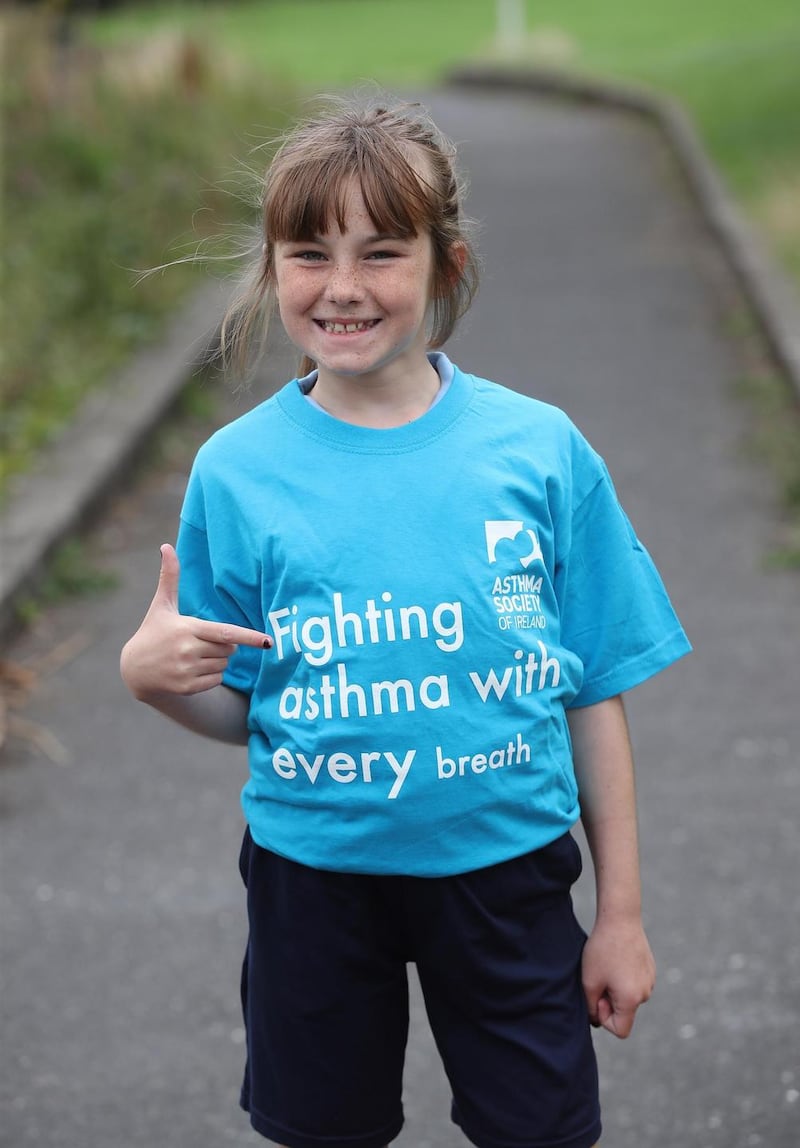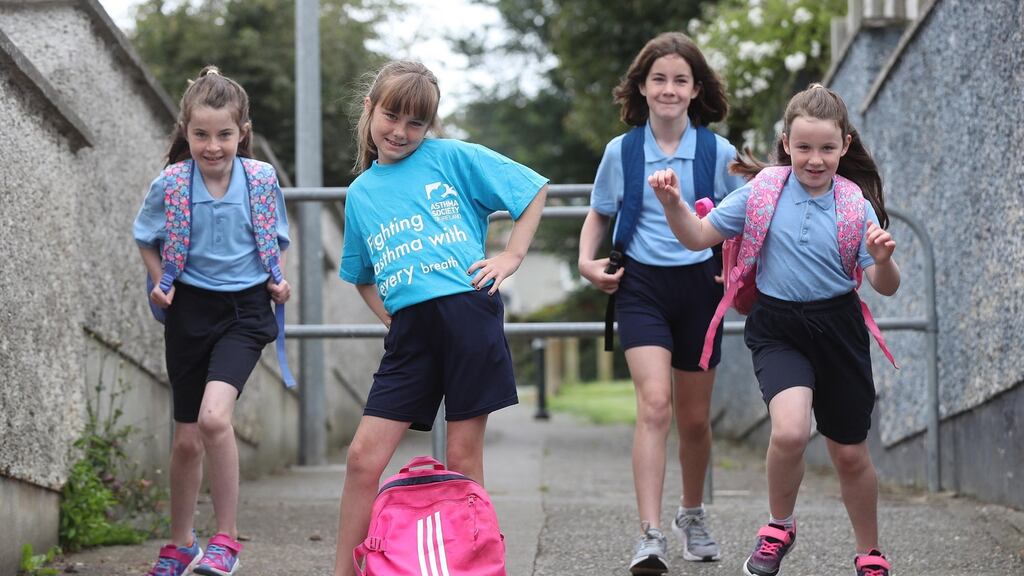Ingrid McLoughlin was five when she first had to go to hospital with a respiratory condition, an incident that saw her subsequently diagnosed with pneumonia.
She was to end up back in A&E several times more with episodes that her parents, Karen and Roy McLoughlin, initially thought were related to the pneumonia before asthma was mentioned. "I had no asthma in my family, nor my husband, so it was a bit of a shock," says Karen.
The parents’ experience
“Ingrid started having tightness in her chest, shortness of breath and from there it went to a pain in her chest,” says Karen. “When it was a bad asthma attack, it was all those things and she’d go very quiet and very lethargic.”
Every time that happened, it got to an emergency situation very quickly and they’d go straight to A&E. “They would give her a nebuliser to bring her around,” Karen explains. Ingrid would be sent home on steroids, then months would pass before the next attack.
“This just went on and on and every time we were in A&E. They were very good at dealing with it but there was nowhere to go from there,” says Karen. “At the time it was very stressful.”
With two sets of twin girls – Ingrid and Erica, now aged 11, and Robin and Rhiannon, now aged eight – and then the arrival of their baby brother Daniel (now aged two), the McLoughlin household in Howth, Co Dublin, was “hectic”. Amidst all that, it wasn’t really clear to Karen and Roy how best to handle Ingrid’s condition. “That’s how I ended up talking to the Asthma Society [of Ireland],” says Karen.
Through this contact, a nurse specialist not only clearly outlined the steps to take to have Ingrid’s asthma managed, but also followed up with the family.
“It sounds so simple now but it didn’t seem so simple at the time,” says Karen. On the nurse’s advice she took Ingrid to the GP and asked for a management plan and also for a referral to a paediatrician.
“Once that happened, things got better. They switched her medication but they monitored it, to see what was working and what wasn’t. They went through everything. It just seemed better.” Having the asthma well managed “took the stress off her and us”.
Ingrid’s sleep had been affected, meaning she wasn’t getting enough rest. But a nasal spray helped her to sleep through the night. “She wasn’t as tired and when she wasn’t as tired she didn’t seem to get triggered as much.”
However, they’re still not clear what does trigger her asthma. Allergy testing showed she was allergic to dust, so they got rid of carpets and curtains, but that hasn’t stopped it. “Sometimes when the weather changes there’s a little dip but we can’t pinpoint it.”
Ingrid’s last serious episode was during the first lockdown. A “nightmare”, says Karen frankly. As usual, it was evening time when Ingrid’s condition worsened.
Often the out-of-hours doctors’ service will advise going straight to a hospital emergency department in such situations but “because of the Covid-19 situation, they triaged us at home”. However, Ingrid’s condition deteriorated.
“We couldn’t get the pain in her chest gone and it was getting worse, and her breathing. You can’t let that go on for too long.” Karen rang ahead to A&E and there wasn’t one other person in there when they arrived.
“They were really quick with us. I had already done the asthma action plan they had given me so she had already got loads of Ventolin [an inhaler]. They did a check on the oxygen in her blood and sent us on our way.”

After that, Karen got back on to the Asthma Society of Ireland to go through everything with the nurse to see if they could work out why it might have happened, because Ingrid had been so well for so long. It might sound mad, Karen says, but they concluded it could have been triggered by her and Roy cleaning so much with a bleach spray to safeguard against the novel coronavirus.
Karen is confident that her daughter’s asthma is being managed well now, with use of a controller inhaler daily, a nasal spray at night to help her sleep and a reliever inhaler when necessary or before sport. “They have whittled down her meds and she is managing on much less. She is getting older and she knows when she needs to take extra.”
The child’s experience
“My chest was sore and it was hard for me to breathe,” is one of Ingrid’s earliest memories of being hospitalised, about the age of five. “For some reason I thought I was going to die but I was only young.”
When she was told she had asthma, she recalls: “At first I thought, ‘Urgh, I can’t do anything now’ but once I got it controlled and had my inhaler I could pretty much do anything.”
Having just started fifth class, she takes her blue reliever inhaler to school every day “just in case we’re doing PE or I’m tired”. She also plays Gaelic football and camogie with the Beann Eadair club.
She uses her blue inhaler “if I’m feeling a bit dizzy, or running a lot”. You have to wait two or three minutes before it starts working, she explains, but then you feel the difference.
Ingrid sometimes wonders why she has asthma and her twin Erica doesn’t. “We’re not that different,” she adds, “we are different in style but we actually do the same things.”
Asthma and schools
Hospital admissions for children suffering with asthma typically rise sharply at this time of year after the schools go back.
The Asthma Society of Ireland, supported by Trudell Medical International, is hosting a free "Back to School" webinar next Tuesday evening, September 28th. Facilitated by Asthma Society chief executive Sarah O'Connor, the event aims to educate teachers and carers about good asthma management. An Asthma Safe Schools survey undertaken earlier this year with principals found that 94 per cent who responded were concerned about the risk of asthma in their school. Just more than one-third of respondents had experienced a child in their school having an asthma attack and 82 per cent said they and their colleagues would not feel confident about managing an asthma attack to keep a child safe. Registration for this free online event can be done via asthma.ie.
Read: How do I spot if my child has . . . asthma?

















